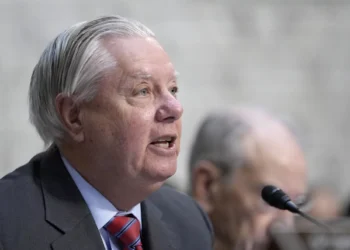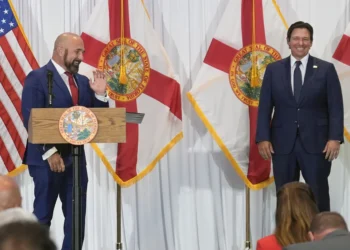The recently passed budget reconciliation legislation included some notable reforms designed to control federal spending. But with the national debt standing at $36 trillion and rising, lawmakers can — really must — do more to manage Washington’s financial situation.
Under congressional procedures, the “big, beautiful” reconciliation package only dealt with mandatory spending — government programs that operate on autopilot from year to year. Its passage will shift Congress’s attention to discretionary spending and the 12 appropriations bills that finance most of the functions of government, such as K-12 education funding, defense spending for the Pentagon, various grant programs, and much else besides.
Rescissions Package
Now that it has enacted the reconciliation measure, the Senate will move to consider the administration’s package of spending cuts (rescissions) that the House considered last month. While the House passed the package on a largely party-line vote, it remains unclear whether the Senate will pass, amend, or reject the rescissions proposal.
The good news: Under the Budget Impoundment and Control Act of 1974, consideration of a rescissions package is exempt from a Senate filibuster, meaning that 51 Republicans can pass the spending cuts without Democrat votes. Unfortunately, however, Senate Appropriations Chair Susan Collins, R-Maine, said shortly after the administration released its proposal that she does “not support the rescission for PEPFAR [the President’s Emergency Plan for AIDS Relief] and global health programs.”
The 45-day clock, outlined in the Impoundment Control Act for Congress to pass the rescissions measure, has run for more than a month. If the Senate does not pass some version of the Trump administration’s proposed spending reductions by July 18 — one week from Friday — the administration will be forced to spend the money and prohibited from proposing additional spending cuts to those programs for the remainder of this fiscal year.
Pocket Rescissions?
Based on some comments by House Freedom Caucus members during and after the vote on the reconciliation measure, it sounds like the White House made informal commitments to those lawmakers that the Trump administration would pursue a package of “pocket rescissions.” As I previously explained, this strategy would have the administration submit a further package of spending reductions to Congress within 45 days of the Sept. 30 end of this current fiscal year.
In the case of regular rescissions, if Congress refuses to endorse the spending reductions within 45 days, then the administration has to spend that money, as outlined in the Impoundment Control Act. But under the “pocket rescission” strategy, submitting a package of spending reductions within 45 days of the end of the fiscal year, the administration can refuse to spend the money regardless of whether Congress endorses, rejects, or fails to act on the rescission package.
At least, that’s the position the Trump administration has taken and will argue in court, as this strategy will undoubtedly create legal challenges. As I noted previously, the strategy is not without legal, political, and policy risks. But based solely on reading the proverbial tea leaves, I believe the administration will use a Friday during the August recess to propose a “pocket rescissions” package in the billions, and likely tens of billions of dollars.
Discretionary Spending Deadline
As previously noted, the current fiscal year ends on Sept. 30, and Congress will have to take some action on discretionary appropriations measures for the new fiscal year by then. While Congress has not passed all 12 appropriations bills by the Sept. 30 deadline since 1994, lawmakers are particularly behind schedule this year — both because an incoming administration faces difficulties getting its budget proposal finalized, and because lawmakers have focused instead on the rescissions package and the “big, beautiful” reconciliation bill.
Congressional leaders have yet to signal whether they will attempt to pass a continuing resolution that extends current-year spending levels, a series of smaller spending bills, or a massive omnibus appropriations measure. Regardless, because discretionary appropriations measures — unlike the budget reconciliation bill — are subject to a 60-vote filibuster in the Senate, Democrats will have an ability to influence the outcome. The level of their hostility to the previous spending and staffing reductions already announced by the administration, along with any potential “pocket rescissions” package proposed prior to Sept. 30, will determine how the spending battle plays out into the fall.
Additional Reconciliation Measures?
House Speaker Mike Johnson, R-La., has expressed his desire for lawmakers to consider additional budget reconciliation bills to reduce mandatory spending. Congress can pass such measures for the upcoming fiscal year that starts Oct. 1, along with a third budget reconciliation bill for the fiscal year beginning October 2026. However, because Congress generally only acts when facing a deadline, and because there are no major deadlines requiring legislative action, time will tell whether additional reconciliation measures materialize.
One factor, however, may encourage lawmakers to pursue additional reconciliation legislation. Specifically, guidance from the Senate parliamentarian led Congress to defund Planned Parenthood in the “big, beautiful” bill — only for one fiscal year. If lawmakers do not renew this provision, federal dollars will resume flowing to the nation’s largest abortion provider — a fact that could provide an impetus for another reconciliation bill.
Regardless of whether lawmakers will pass a second or third reconciliation measure, they definitely should to combat the large and growing mountain of federal debt. Rather than passing the buck to the administration to reduce spending via executive fiat or passing on our bills to the next generation to pay, Congress should do its job and keep restricting the growth of exploding federal spending.
















